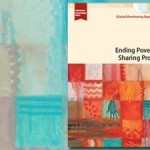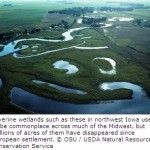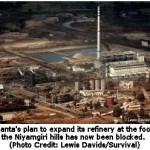Geneva – “The animals are dead. The rivers, lagoons and dams are dry. They have to move to neighbouring countries like Tanzania in search of pastures and water. As they move, they suffer from hunger and they want to lie down because they’re tired from having to walk long distances.”
 These are the words of Jemimah Maitei Kerenge, Maasai filmmaker and an advocate for the dire situation of her drought-devastated people in Kenya. Their ancient culture is being destroyed by climate change and they are being forced to migrate in their thousands out of their ancestral lands into neighbouring countries.
These are the words of Jemimah Maitei Kerenge, Maasai filmmaker and an advocate for the dire situation of her drought-devastated people in Kenya. Their ancient culture is being destroyed by climate change and they are being forced to migrate in their thousands out of their ancestral lands into neighbouring countries.
This is just one example of a ‘new’ type of human displacement that has become a major pre-occupation of the international community as the domino effect of climate change forces people to seek new lives elsewhere in their countries and sometimes across borders.
The UN High Commissioner for Refugees (UNHCR), António Guterres, sees climate change and the migration it provokes as “a challenge that has important implications for the maintenance of international peace and security” – a point he made recently before the UN Security Council.
He warned, “Climate change is reinforcing the potential for conflict within and between States by intensifying the level of competition for scarce resources, such as water, grazing and arable land. Long-standing resource management systems are coming under growing pressure, making it increasingly difficult for countries and communities to share common assets in a regulated and peaceful manner. Many commentators have pointed to the potential for so-called ‘water-wars’ over trans-boundary freshwater reserves.”
Shortly after Guterres’ pronouncement, government ministers from around the globe underscored the importance of strengthening actions and finding lasting solutions to the growing problem of climate displacement. A Ministerial Communiqué issued last December stated, “We will reinforce cooperation with each other and work with the Office of the United Nations High Commissioner for Refugees and other relevant stakeholders, as appropriate, to deepen our understanding of evolving patterns of displacement and to agree upon ways to respond to the challenges we face in a changing global context.”
Climate migration is a multi-faceted issue subject to international law depending on whether migrants are on the move within their own countries or crossing national borders. According to UNHCR, if the movement of people is voluntarily undertaken within their country of origin, then their needs are the responsibility of governments as well as the International Organization for Migration (IOM). Forced migration and cross-border movement puts displacement in the lap of UNHCR, the 1951 Refugee Convention and national immigration laws.
José Riera, a Senior Adviser in UNHCR’s Division of Internal Protection, admits that the cross-border movement is an unresolved and problematic issue. There are also no immediate solutions since there are no countries, with the exception of Finland, Italy and Sweden, issuing entry visas to people fleeing as a result of environmental degradation. The 1951 Convention provides no legal framework to accommodate them and neither does its 1967 Protocol.
He believes, however, that the bigger issue – protecting at-risk populations, building resilient communities and stemming the increasing movement of people both in country and across borders – begs much more critical attention and priority than it has been given in the past.
“Disaster Risk Reduction (DRR) is the key to the displacements we are seeing. Humanitarian agencies no longer have the luxury of sitting outside what they see as a development process because it’s not their area. Likewise governments must move beyond traditional development planning. Both have to come terms with the fact that DRR is a component of the solution,” states Riera.
“It’s all about adaptation,” states Riera. “We all have a duty now to prepare for the unavoidable and foreseeable consequences of climate change, like droughts, hurricanes and floods. We have to plan for migration, displacement and relocation for prolonged drought scenarios. We have to concretely think about erecting physical barriers such as dykes and levees to protect communities from floods; we have to provide new agricultural techniques for at risk populations who depend on farming; and we have to make early warning systems available to populations that are threatened by hazards.”
Riera has a strong ally in Margareta Wahlström, the UN Disaster Risk Reduction Chief, who believes, “Many current policies do not minimize risks, and poorly conceived drought and flood relief policies can effectively lock in the vulnerability of communities to future droughts and floods. Such policies must be replaced with a risk reduction approach that addresses the underlying causes of vulnerability that result in displacement and forced migration.”
“A further measure is to see how we can contribute to an adjustment of national development policies and investments that will give alternatives to people in particularly exposed areas; economic opportunities to develop other sources of income and to improve current sources of livelihoods. The current development models do not yet take this very urgent issue into consideration and this will cost a lot to realign as country’s shift focus.”
Resolving the issue of climate migration becomes even more complex in light of disappearing small-island developing States (SIDS) whose models of development are not viable for the future and whose people face loss of territory and statelessness.
New Zealand has an agreement with Kiribati in which it allows 70 people from this small island State to enter each year to work and send money home to their families. Beyond that Riera feels there is a need for a conference on the SIDS to come up with approaches to this looming problem.
“Where will these people go if and when it becomes impossible for them to remain in their own country?” Guterres asks. “Some of them may be able to acquire a second nationality once they have been obliged to move. But how will they retain their national identity? Is the world ready to accept the idea of a state without a territory? These are questions that the international community has only just started to consider and which now require serious attention.”
Source: By David Singh, United Nations International Strategy for Disaster Reduction (UNISDR).














